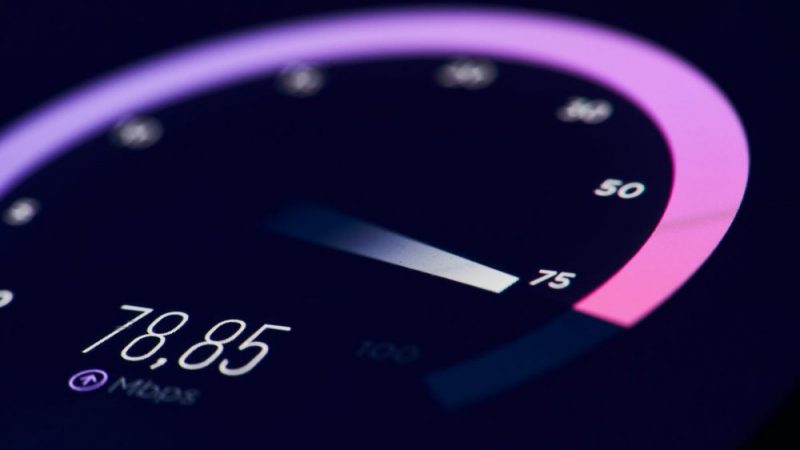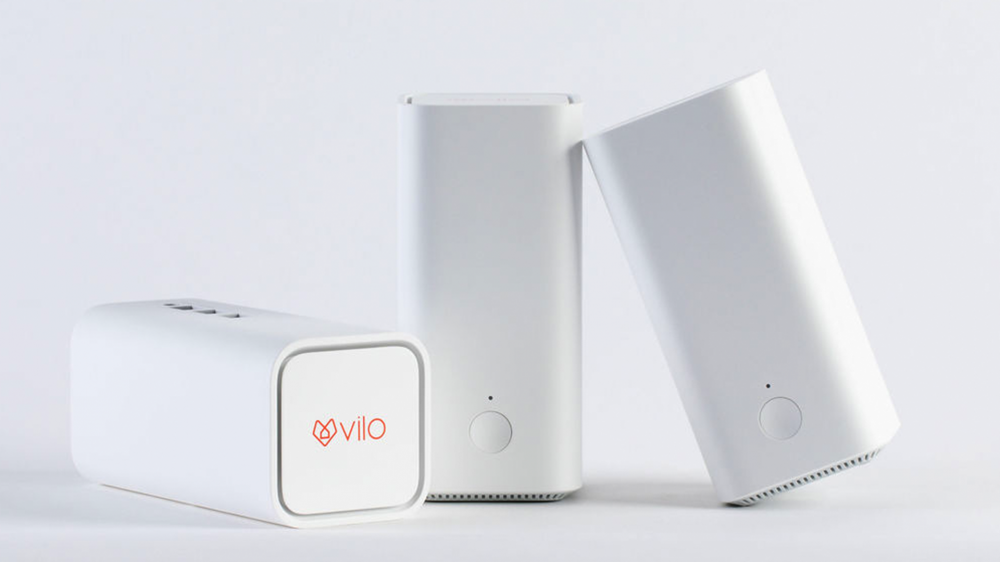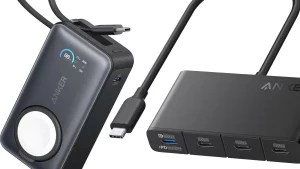What Internet Speeds Do You Really Need?


Businesses thrive by selling people things they don’t need, and if you have an internet connection, there’s a good chance your provider has tried to upsell you a high-tech-sounding package. But is it something that can make a difference in your life, or will you just be wasting money?
We live in a time where ultra-fast internet is available almost everywhere. Cities have cheap fiber packages where gigabit speeds cost around the same as a few cups of coffee. Smaller metropolitan areas might include monopolies that overcharge their customers, but a good variety of speeds are still on the table. And even rural areas cursed with dial-up as recently as a few years ago now have a somewhat reasonably priced high-speed option on the table with Starlink.
But if you’re in an area with many options, what should you go for? Splashing out on the fastest package might be tempting, especially if it isn’t much more expensive than one of the basic deals. But, depending on your circumstances, there’s a good chance that you’ll be wasting that extra money.
Be Aware of What You’re Actually Getting
Living Alone Has Its Benefits
Some Online Activities are More Demanding Than Others
Demands Are Going to Keep Increasing
Don’t Pay for More Than Your Router Can Handle
So, What Speeds Do You Really Need?
Be Aware of What You’re Actually Getting

The English language has many nuances, and the phrase “up to” is potent yet often overlooked. Put it before something like 1 GB/s, and the person reading it might ignore the phrase “up to” all together and get it in their heads that they’ll be getting the speed they believe has been advertised. However, the sentence “broadband speeds of up to 1 GB/s” just means your internet speed shouldn’t exceed that figure; it’s a cap, not a baseline. While many companies do hit their targets, others hit the mark they are advertising in a couple of areas and use that to justify the fact they’re essentially lying to their customers everywhere else. So make sure your internet provider is delivering what you expect from them.
Even if you’re getting the speeds that you were promised through your modem, that doesn’t mean your devices will be connected at those speeds. Your internet’s bandwidth is split between the devices that are connected to it. While every device you have connected won’t demand the same amount of bandwidth, they will all take a slice. So if your router is pumping out 100 Mbps, and you have a TV, a laptop, and a couple of cellphones connected simultaneously, none of those devices will show 100 Mbps on a speed test.
Living Alone Has Its Benefits
As I’ve mentioned, the more devices you have connected, the more bandwidth you will need. A couple of decades ago, most houses would have had one PC and maybe a games console, but that’s no longer the case. People tend to have their own devices now, so a family of four is likely to have several smartphones, laptops, and TVs all fighting for a slice of your modem’s output.
Logically, the more people you have in your household, the higher bandwidth you’ll need. Various things, like an older router, poor signal distribution throughout the house, or an issue with a device, can slow your connection speeds to a crawl. But if you’ve noticed the internet is lightning fast while everyone else is out of the house, but it starts to lag when your spouse/children/roommates are at home and online, your bandwidth may be the problem.
US News recommends a connection speed of more than 25 Mbps for a household of four people who live in a “high-use” household. The website also claims a three-person household of “moderate” internet users can get away with 12.5 Mbps to 25 Mbps of bandwidth. But those estimates seem a bit low.
Some Online Activities are More Demanding Than Others

Even smaller households may need connection speeds faster than 25 Mbps due to global events over the last couple of years. The coronavirus pandemic caused significant changes in how we live our day-to-day lives — and while it may now be winding down, some of those changes are hanging around.
Remote work and schooling can put a heavy strain on your internet connection. You need to look out for a few things if your household is still working or learning remotely. Firstly, there’s the number of video calls you’re required to do. These are highly demanding both in terms of download and upload speed.
Then there is the matter of actually submitting your work. An online service like Google Docs can usually handle it if you mainly deal with text documents. But if you produce large video or image files for a living, uploading those can take a while if your internet connection’s upload speed isn’t on point. Upload speed often gets overlooked when shopping for an internet plan, so even if your download speed is lightning quick, your upload speed may lag behind.
Finally, you may have remote work that requires you to interact directly with a device in the office. Remote desktop software tends to need a specialized VPN and can take up a good amount of bandwidth — especially if you’re watching a video on the remote PC. If your remote job requires you to use a work computer from a distance, it is worth beefing up your home internet connection.
Demands Are Going to Keep Increasing

Another factor that could emerge if Mark Zuckerberg gets his way is remote work via virtual reality. One of the Metaverse’s key goals was to get people working and collaborating remotely through the medium of VR. This is highly demanding, both in terms of hardware requirements and the demands it places on your internet connection. Even Meta’s staff aren’t on board with this yet — so don’t rush out and buy a Quest Pro and a WiFi 6e router. But it is something to keep an eye on.
Video is also getting sharper, with 8K hitting the market a few years ago. It isn’t mainstream yet, but everyone thought 1080p was fine a few years ago, and now we have households where nothing less than 4K will do. You also have to consider the fact that everything from lightbulbs to toasters requires an internet connection these days. So don’t be shocked if you buy something as benign as a coat rack in 10 years and spot it tossing your jacket on the floor because your connection speeds aren’t meeting its demands. The chrome-coated snob.
Don’t Pay for More Than Your Router Can Handle

Bottlenecking is something you should always be aware of when dealing with technology. With PC building, it happens when an inexperienced builder goes all out on something like a GPU while skimping on another part, like the processor. The processor will hit its limit before the GPU maxes out its capabilities, and you’ve just wasted money on an expensive part that will never reach its potential.
The concept of bottlenecking isn’t just limited to PCs, and you shouldn’t be throwing fist fulls of money at your internet provider if your home network isn’t up to par. Many of the issues that spread your bandwidth thinly will max out a router. Arguably, a router is even more badly affected because not everything connected to it requires internet access, but it has to manage those devices one way or another.
Similarly, your internet connection will also suffer if your router’s signal is weak in certain areas of the house. So if you have a bit of extra budget and are still using the router your ISP provided when you signed up, it might be worth dropping a few hundred bucks on a modern mesh network before looking at new internet plans.
So, What Speeds Do You Really Need?
If you live alone and only use the internet for light browsing, you can survive happily on the cheaper broadband package available. Even if you like streaming UHD movies and gaming online, 25 Mbps is more than enough for a single user as things stand. Most internet packages in large parts of the US seem to hover around the 100 Mbps mark, which should be more than adequate for the average family.
There are a few reasons you might consider a package that offers more than 100 Mbps, but this is unlikely to apply to most of the population. If you have a large household where more than six people perform demanding tasks like streaming videos in 4K, then it’s worth the upgrade. If you download a lot of large files for whatever reason, you may appreciate the higher speeds individual devices can hit with a faster connection.
You could also be rubbing your hands together at the prospect of 8K streaming. Ultra HD video is currently a thing, but the streams are hard to come by. The equipment you need to enjoy it is ludicrously expensive. The recommended connection speed for enjoying 8K video on YouTube is 100 Mbps. Still, that isn’t something you’re guaranteed to hit if you’re paying for a package with speeds “up to” 100 Mbps. Equally, if anyone else is using the internet for anything at the time, your speeds may dip below what your extremely high-quality video needs. So if you want to be an early adopter and your family has high demands, it’s probably time to start looking at gigabit packages. Though you’re probably better off saving your money and sticking to 4K.










